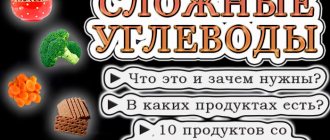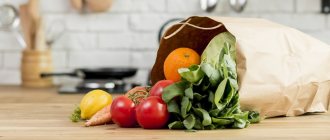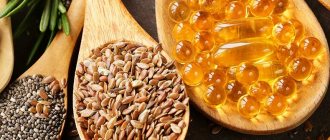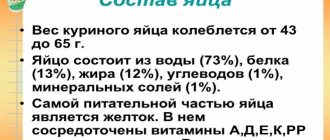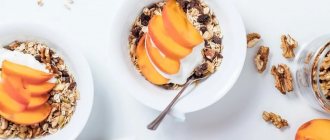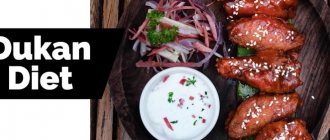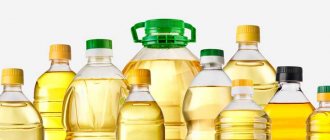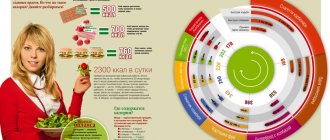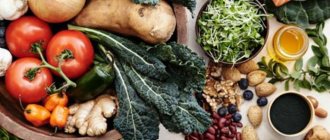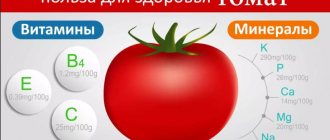Edited by an expert:
Nadezhda Primochkina, nutritionist - 05/07/2021
What do we know about calories? Well, firstly, that they are being intensively counted, fighting with extra centimeters on the waist . And they are also counted when, on the contrary, you need to gain weight - for example, athletes. But few people think about what calories give to the body and what they are. Let's understand the issue!
What is the difference
Those who monitor body weight and count kcal do not really think about what this means. The reduction in calories is carried out actively, without particularly going into where it came from and where it went.
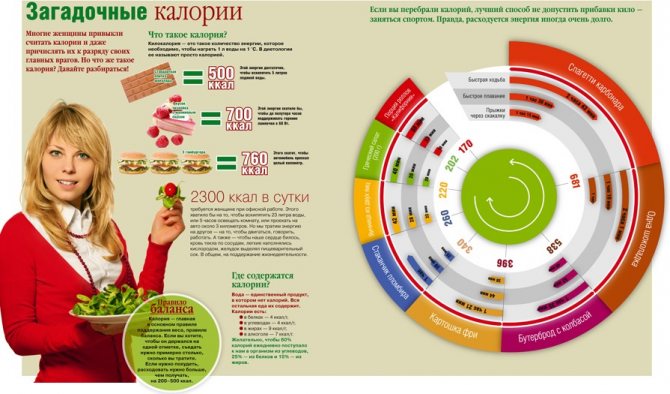
And most importantly, without thinking about it: calories and kilocalories - what is the difference between them:
- The calorie content of the product is always indicated on the packaging in kilocalories. If it says “N kcal”, you can’t believe it, all products have a calorie content, even the smallest one, and this sign is the ignorance of the manufacturer.
- To be clear, how many calories are in a kilocalorie? 1 kcal = 1000 calories.
- Exercise equipment in the gym often displays incorrect information about the calories burned on it. The measurement is made in kilocalories.
It must be remembered that products with zero or negative kcal do not exist in nature, no matter how their manufacturers claim in their advertisements.
Video
What are calories and how do they differ from kilocalories?
Contrary to stereotypes, calories are far from the concept of a unit of “fullness.” Until the 20th century, this unit was used to measure thermal energy, and today it is used to indicate the energy value of products.
Excursion into history
The term “calories” appeared in the 2nd half of the 19th century, thanks to French scientists who named the unit of calculating the heat of combustion with the word “calor” - thermochemists Favre Zilberman. In the 90s of the same century, food products were “decomposed” into carbohydrates and proteins with fats with the light hand of chemist Wilbur Atwater, after which the energy value of each food group began to be measured in calories. And since the 20th century, everyone who dreams of gaining weight or losing weight quickly has started counting calories in their diets.
What is a calorie?
This term implies a certain amount of heat, with the help of which the temperature of 1 g of water increases by 1 g Celsius. In traditional physics, it is customary to measure thermal energy in joules, but in everyday life these measurements are made using calories. By the way, 1 calorie, as you know, will be equal to 4.1868 joules.
The difference between a calorie and a kilocalorie
Anyone who watches their weight knows the word “calories.” They are fighting these mysterious units on all fronts, without really understanding what their effect is, where it comes from and where it goes. And the main thing is how it differs from kilocalories.
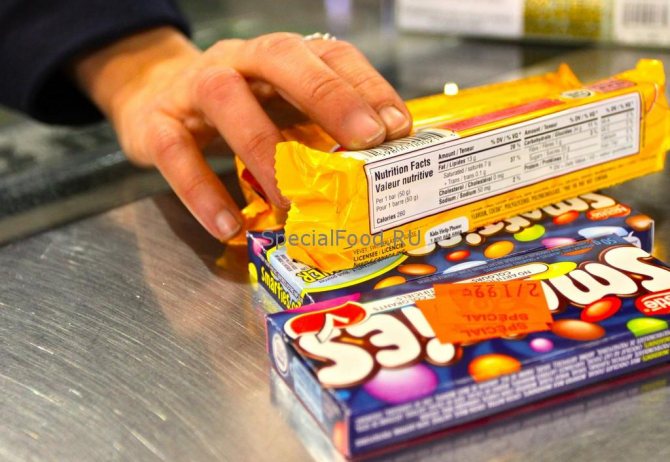
- To understand the question : 1 kilocalorie (kcal) = 1 thousand calories. The analogy is clear and simple: 1 kg = 1 thousand grams.
- Food packaging indicates the energy value of food in kilocalories. The word “N calories” on the packaging is the illiteracy of the manufacturers.
- Instructions about “calories” expended on exercise equipment in individual sports clubs are also considered illiterate We're talking about kilocalories.
Why does the body need kcal?
Energy is required for normal human functioning. To move, breathe, circulate blood through the vessels, and even rest. Energy enters the body from the outside, with food. How much a person eats, so much energy will be generated.
How many kilocalories are contained in one gram of food components:
- carbohydrates – 4 kcal;
- proteins – 4 kcal;
- fats – 9 kcal.
Human food consists of these ingredients. Knowing the weight of the product in a dish, you can easily calculate the calories received from food.
The most popular breakfast is oatmeal. In 100 g there will be so many calories:
- Fat 6 g * 9 kcal = 54 kcal.
- Protein 12 g * 4 kcal = 48 kcal.
- Carbohydrates 51 g * 4 kcal = 204 kcal.
It turns out that 100 g of oatmeal contains 306 kcal. Metabolism will dispose of the received energy as follows: proteins will be converted into amino acids, carbohydrates into glucose and other simple sugars, and fats will be converted into glycerol and fatty acids required by our body.
Video
Where does the discrepancy come from?
And yet, the huge number of calorie reference books sometimes leads to confusion: the numbers turn out to be different. Why is this happening?
“American, European, Asian, Russian data on the calorie content of products may vary,” says Minkail Gapparov, corresponding member of the Russian Academy of Medical Sciences, deputy director for scientific work of the State Research Institute of Nutrition of the Russian Academy of Medical Sciences . — The content of proteins, fats, carbohydrates in products will fluctuate depending on climate, soil, varieties, species, etc. Moreover, agriculture tends to follow the path of intensification, and therefore potatoes, for example, a hundred years ago contained 21- 22% starch, now the best varieties contain 12-13%. This means that its energy value has decreased. In addition, the higher the yield, the lower the content of the product: in sugar beets with a large harvest, there is less sugar, which means the calorie content is lower. Therefore, the discrepancies in the numbers are quite understandable.
Where do they go then?
The body processes complex components of foods into simple ones, and then they go:
- Amino acids - from them muscle tissue, some hormones and enzymes are formed.
- Glucose is used to nourish cells. Its excess is deposited in “storage areas”: muscle and liver cells.
- Fats are used as fuel. Some of them go to the liver and are processed into cholesterol. When too much of it is received, it is deposited in the subcutaneous layer. These are exactly the fats that all females and a sufficient number of the stronger sex struggle with.
How is caloric intake distributed if you need to gain weight:
- Proteins – 30% of the total diet.
- Fats – 35% of food.
- Carbohydrates – 45% of the diet.
If you want to lose weight, then the percentage component changes:
- Proteins – 30% of the total products.
- Fats – 20% of products.
- Carbohydrates – 50%.
This is important: The amount of kcal for a person’s daily requirement should be calculated individually. As a result, the amount of proteins, fats and carbohydrates will change significantly.
How many calories should you eat every day?
The number of calories a person needs per day depends on their activity level and resting metabolic rate, which can be measured in a doctor's or nutritionist's office.
There is a common belief that men should consume less than 1500 calories and women 1200 calories to ensure a balance of essential nutrients and micronutrients.
What should these calories be? Official Dietary Guidelines recommend that for an adult, 45 to 65 percent of calories come from carbohydrates, 20 to 25 percent come from fat, and 10 to 35 percent come from protein. Children need more fat, 25 to 40 percent of their calories. No more than 25 percent of calories should come from added sugar.
How to calculate the calorie content of foods
Quite often, young girls try to lose weight by reducing calories. At the same time, they maintain their usual diet, just monitor the balance.
Video
The important principles in this method of losing weight remain:
- The amount of kilocalories eaten per day should be equal to or less than the amount of energy consumed during the day.
- It does not matter what products are used. It is important not to overstep the target limit and not to eat too much.
- You cannot significantly reduce the daily kcal norm so as not to provoke a malfunction of the systems and not get any diseases.
The calorie content of foods is calculated as shown in the example of oatmeal:
- Ingredients for preparing porridge: 200 g of cereal, a liter of milk, 2 tablespoons of sand, a pinch of salt, a spoon of cow butter.
- Calorie content: cereal – 732 kcal, milk – 640 kcal, sand – 199 kcal, butter – 149.6 kcal, salt – 0 kcal.
- The final result of the resulting porridge is 1720.6 kcal.
The numerical index of the calorie content of a product is available in a table that can be found on the Internet or in specialized literature.
When calculating, you need to take into account some nuances:
- The indicator for boiled cereals and pasta is three times less than the same product in its raw form.
- The weight of boiled meat decreases quite significantly, but rice, on the contrary, becomes larger.
- Dried foods (fruits, mushrooms, berries and crackers) have a much higher calorie content than the same foods in their original form. Here you need to calculate in this way: first, calculate the indicator x - the difference in the weight of the dried product, and then multiply the indicator from the table by x.
- In soup, you need to calculate not only those products that are included in the broth, but also seasonings, sour cream and everything that is usually added directly to the plate.
Nutrition must be monitored carefully, taking maximum care to ensure that healthy foods enter the body.
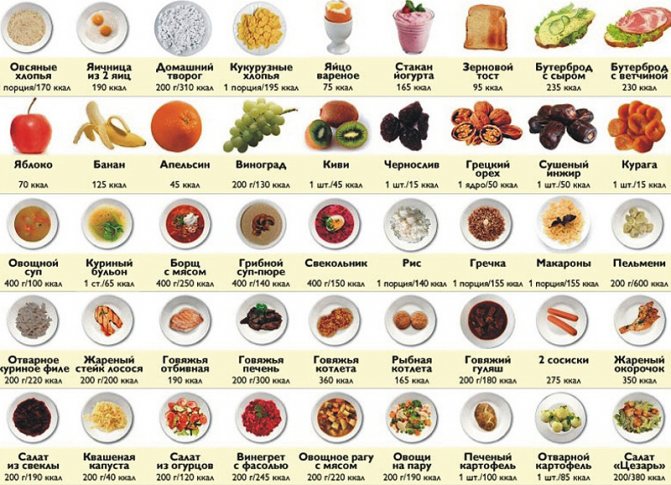
Excerpt characterizing Calorie
Of the three purposes of Freemasonry, Pierre was aware that he did not fulfill the one that prescribed every Freemason to be a model of moral life, and of the seven virtues, he completely lacked two in himself: good morals and love of death. He consoled himself with the fact that he was fulfilling another purpose - the correction of the human race and had other virtues, love for one's neighbor and especially generosity. In the spring of 1807, Pierre decided to go back to St. Petersburg. On the way back, he intended to go around all his estates and personally verify what was done from what was prescribed to them and in what situation the people were now, which God had entrusted to him, and which he sought to benefit. The chief manager, who considered all the ideas of the young count almost madness, a disadvantage for himself, for him, for the peasants, made concessions. Continuing to make the task of liberation seem impossible, he ordered the construction of large school buildings, hospitals and shelters on all estates; For the master's arrival, he prepared meetings everywhere, not pompously solemn ones, which, he knew, Pierre would not like, but just the kind of religious thanksgiving, with images and bread and salt, just the kind that, as he understood the master, should have an effect on the count and deceive him . The southern spring, the calm, quick journey in the Viennese carriage and the solitude of the road had a joyful effect on Pierre. There were estates that he had not yet visited - one more picturesque than the other; The people everywhere seemed prosperous and touchingly grateful for the benefits done to them. Everywhere there were meetings that, although they embarrassed Pierre, deep down in his soul evoked a joyful feeling. In one place, the peasants offered him bread and salt and an image of Peter and Paul, and asked permission in honor of his angel Peter and Paul, as a sign of love and gratitude for the good deeds he had done, to erect a new chapel in the church at their own expense. Elsewhere, women with infants met him, thanking him for saving him from hard work. At the third estate he was met by a priest with a cross, surrounded by children, whom, by the grace of the count, he taught literacy and religion. In all the estates, Pierre saw with his own eyes, according to the same plan, the stone buildings of hospitals, schools, and almshouses that were to be opened soon. Everywhere Pierre saw reports from managers about corvée work, reduced compared to the previous one, and heard for this the touching thanksgiving of deputations of peasants in blue caftans. Pierre just didn’t know that where they brought him bread and salt and built the chapel of Peter and Paul, there was a trading village and a fair on Peter’s Day, that the chapel had already been built a long time ago by the rich peasants of the village, those who came to him, and that nine-tenths The peasants of this village were in the greatest ruin. He did not know that due to the fact that, on his orders, they stopped sending children of women with infants to corvee labor, these same children carried out the most difficult work in their half. He did not know that the priest who met him with the cross was burdening the peasants with his extortions, and that the disciples gathered to him with tears were given to him, and were bought off by their parents for a lot of money. He did not know that the stone buildings, according to the plan, were erected by their own workers and increased the corvee of the peasants, reduced only on paper. He did not know that where the manager indicated to him in the book that the quitrent was reduced by one third at his will, the corvée duty was added by half. And therefore Pierre was delighted with his journey through the estates, and completely returned to the philanthropic mood in which he left St. Petersburg, and wrote enthusiastic letters to his mentor brother, as he called the great master. “How easy, how little effort is needed to do so much good, thought Pierre, and how little we care about it!” He was happy with the gratitude shown to him, but was ashamed to accept it. This gratitude reminded him how much more he could have done for these simple, kind people. The chief manager, a very stupid and cunning man, completely understanding the smart and naive count, and playing with him like a toy, seeing the effect produced on Pierre by the prepared techniques, more decisively turned to him with arguments about the impossibility and, most importantly, the unnecessaryness of the liberation of the peasants, who, even without They were completely happy. Pierre secretly agreed with the manager that it was difficult to imagine happier people, and that God knows what awaited them in the wild; but Pierre, although reluctantly, insisted on what he considered fair. The manager promised to use all his strength to carry out the will of the count, clearly understanding that the count would never be able to trust him not only as to whether all measures had been taken to sell forests and estates, to redeem from the Council, but would also probably never ask or learns how the built buildings stand empty and the peasants continue to give with work and money everything that they give from others, that is, everything that they can give.
How to calculate your daily caloric intake
To determine calorie content, you need to take into account some indicators:
- Metabolism (OM). It is affected by work schedule, physical activity, and nutrition. OB is calculated as follows: weight multiplied by 20 kcal.
- Age. How to calculate: for every 10 years after age 20, reduce by 2%.
- Floor. Typically, males require more calories.
- Rhythm of life. The percentage of activity is calculated: inactive - 20%, sedentary with little activity (going to the store, cleaning, walking, etc.) - 30%, average - 40%, high (sports, physical work) - 50%.
- Physical activity (PA) is calculated as follows: OB needs to be multiplied by the percentage of the rhythm of life.
- Percentage of energy during food digestion (PEPP). It is determined as follows: (FA is summed with OB) and multiplied by 10%.
Video
The daily intake of kcal is equal to – PEPP + FA + OB. The final indicator must be adjusted to your age; this is to subtract 2% from the result for the 10 years after the 20-year mark. If the total consumption rate is calculated for weight loss, then the result should be clarified: the daily calorie rate from which is subtracted (weight multiplied by 7 kcal).
Please note: It is necessary to take into account the energy needs of each person individually. Children and adults will have different meanings. Athletes and pregnant women should increase their calorie intake.
How to stay slim
- You should always get up from the table with a slight feeling of unsatiation.
- You should weigh yourself at least once a week and compare the result with the previous one.
- If you see that you have begun to gain weight, you need to limit either the total amount of food, or its calorie content, or start moving more, or both and three at the same time.
- Even if a person loves to eat, good physical activity will prevent extra pounds from forming. If your profession does not involve physical labor, you need to walk 6-8 km daily.
- The main food load (80-85% of food) should occur in the first half of the day.
Low and high calorie foods
Which foods have many or few calories? This is affected by the chemical content. The lowest calorie foods are those whose energy value is less than 40 kcal per 100 g.
Which foods are low in calories:
- Vegetable products: cucumbers, lettuce, greens, garlic, sweet peppers, any onions, beets.
- Fruits and berries: citrus fruits, blackberries, strawberries, quince, cherries, pineapple, cherry plum, lingonberries, kiwi, apple, pomegranates and raspberries.
- Meat products: chicken, rabbit, lean beef, kidneys.
- Fish products: pollock, hake, blue whiting, flounder, shrimp, smelt and other types of river fish.
- Dairy products: all, only low fat.
- From sweets: marshmallows and marshmallows, marmalade.
- From flour - rye bread.
Those foods that have a high calorie content are those that have from 500 to 900 kcal per 100 g. Eating them is unsafe for your figure.
Video
These products include:
- Any types of oils.
- Pork is fatty, lard.
- Raw smoked sausages.
- Cakes with cream.
- Nuts of any kind.
- Milk chocolate.
High-calorie foods include alcoholic drinks, and they also cause increased appetite.
What foods are high in calories?
Foods that are considered high in calories or calories contain a large number of calories compared to others per serving size. Oils, butter and other fats; fried food; sweets are high-calorie foods. Although high-calorie foods are often associated with unhealthy foods, some of them are also rich in nutrients.
Healthy foods high in calories include avocados (227 calories each), quinoa seeds (222 calories per cup), nuts (828 calories per cup of peanuts), olive oil (119 calories per tablespoon), whole grains and, in moderation, , dark chocolate (648 calories per bar).
Raisins are an example of a high-calorie food that may surprise some people; According to research, you can eat 1 cup of grapes and get the same amount of calories as a quarter cup of raisins. Dried fruits are usually high in calories; for this reason, they are popular among travelers who burn a lot of calories.
Expert opinion
Smirnov Viktor Petrovich Dietitian, Samara
Many healthy eating enthusiasts do not know what calories are. How much energy does a person spend per day? Let's give a simple example. The article provides a table of a one-day menu for a person with a light level of physical activity. It is approximately 2500 kilocalories per day. As you know, one calorie heats 1 gram, or 1 ml, of water by 1 degree. What can 2500 kilocalories, or 2.5 million calories, do? First of all, such an amount of energy, however, purely theoretically, will allow heating 1 gram of water by 2.5 million degrees, and this is the temperature of thermonuclear fusion, which occurs in the depths of the sun and is the source of all the energy received by the Earth.
And here is the second example, more “down to earth”. Two large household buckets occupy a total volume of 24 liters (12 liters each). What can the same daily flow do to this volume of water? Simple calculation: (2500000/24000 ml). As a result, the balance is 104. Thus, the amount of energy consumed per day by a person at a “sedentary” job can boil two full buckets of water. Therefore, a person on a low-calorie diet and trying to lose weight should not complain that he receives very little energy. It is enough to remember these numbers, and it will immediately feel easier for him.
Notes
- ↑ 1 2
[www.fundmetrology.ru/depository/01_npa/po879.pdf#page=8 Regulations on units of quantities allowed for use in the Russian Federation] Approved by Decree of the Government of the Russian Federation of October 31, 2009 N 879. - [www.fundmetrology.ru/depository/04_IntDoc_all/MD2.pdf#page=30 OIML International Document D2. Legalized (officially approved for use) units of measurement. Appendix B]
- ↑ 1 2 Dengub V. M., Smirnov V. G.
Units of quantities. Dictionary reference book. - M.: Standards Publishing House, 1990. - P. 56. - 240 p. — ISBN 5-7050-0118-5. - Since the metabolism in a living organism is not capable of absolute oxidation, the second indicator is always less than the first in a certain proportion, reflecting the efficiency of metabolism.
